Starting at 2598 yuan! Insta360 GO Ultra Review: Finally shedding the 'sunshine camera' label
![]() 08/22 2025
08/22 2025
![]() 450
450
I would call it the strongest thumb camera.
As the editor at Lei Technology with the longest experience in using action cameras, I have used most mainstream action cameras on the market for at least half a year or even more. However, I have never had the opportunity to experience Insta360's thumb cameras, as I always felt that their positioning and usage scenarios did not align well with my needs.
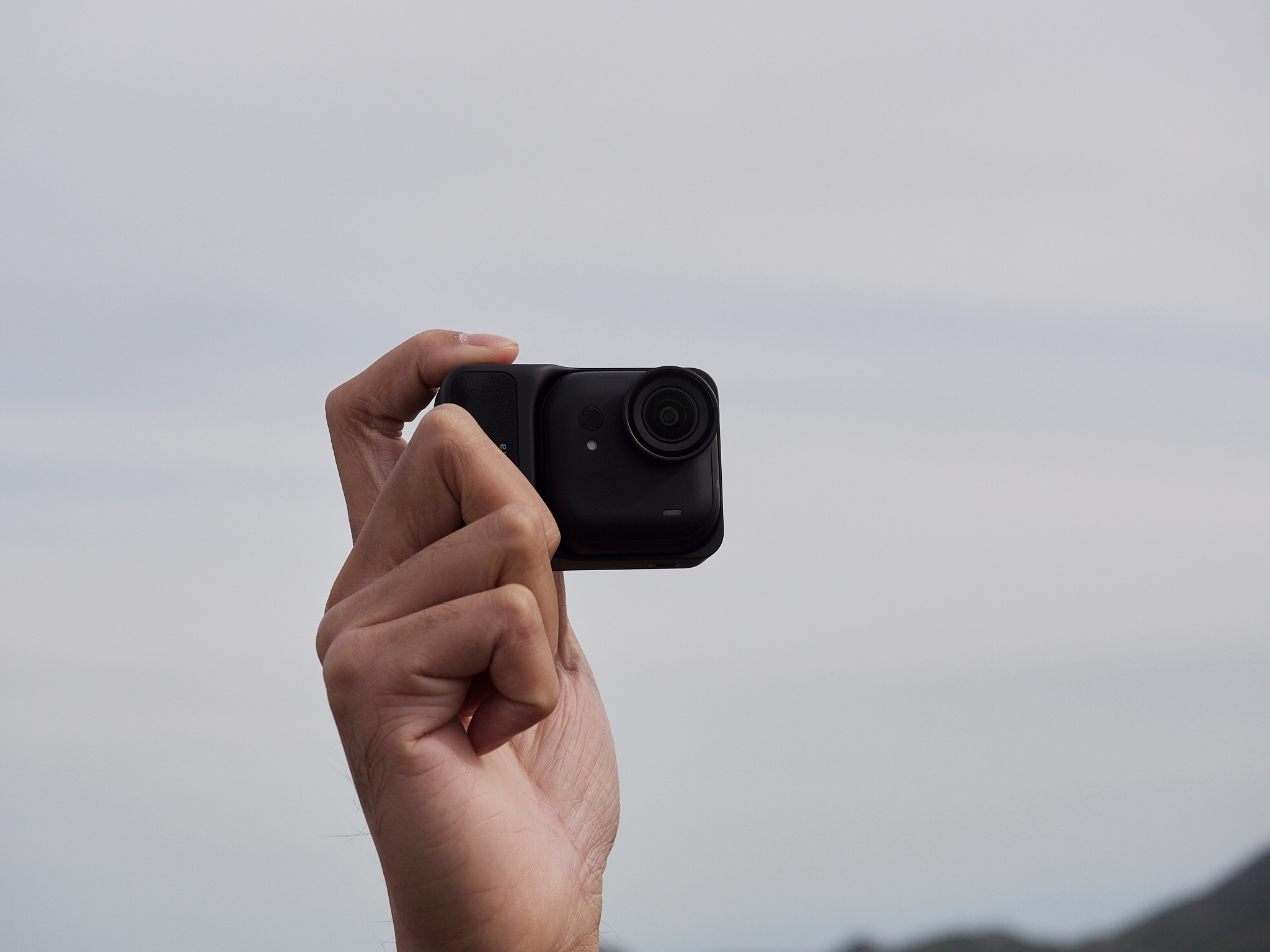
(Image source: Lei Technology)
But the emergence of the Insta360 GO Ultra (hereinafter referred to as Insta360 GO Ultra) has completely rewritten my impression of this type of pocket camera and sparked my deep interest in it. So, what is the detailed experience of this product? Here is my share.
Should it be called a 'pocket camera' instead of a 'thumb camera'?
From the naming, we can already see that the Insta360 GO Ultra is Insta360's new exploration of the pocket camera product line, with significant improvements in areas such as the camera sensor, battery life, and image quality. However, what surprised me was that there was also a notable 'increase' in size.
We can clearly see that the single camera part of the Insta360 GO Ultra is nearly double the size of its predecessor, and its shape has changed from a long strip to a 'small cube'. The reason is easy to guess: to accommodate a larger sensor, a larger battery, and a better heat dissipation module.
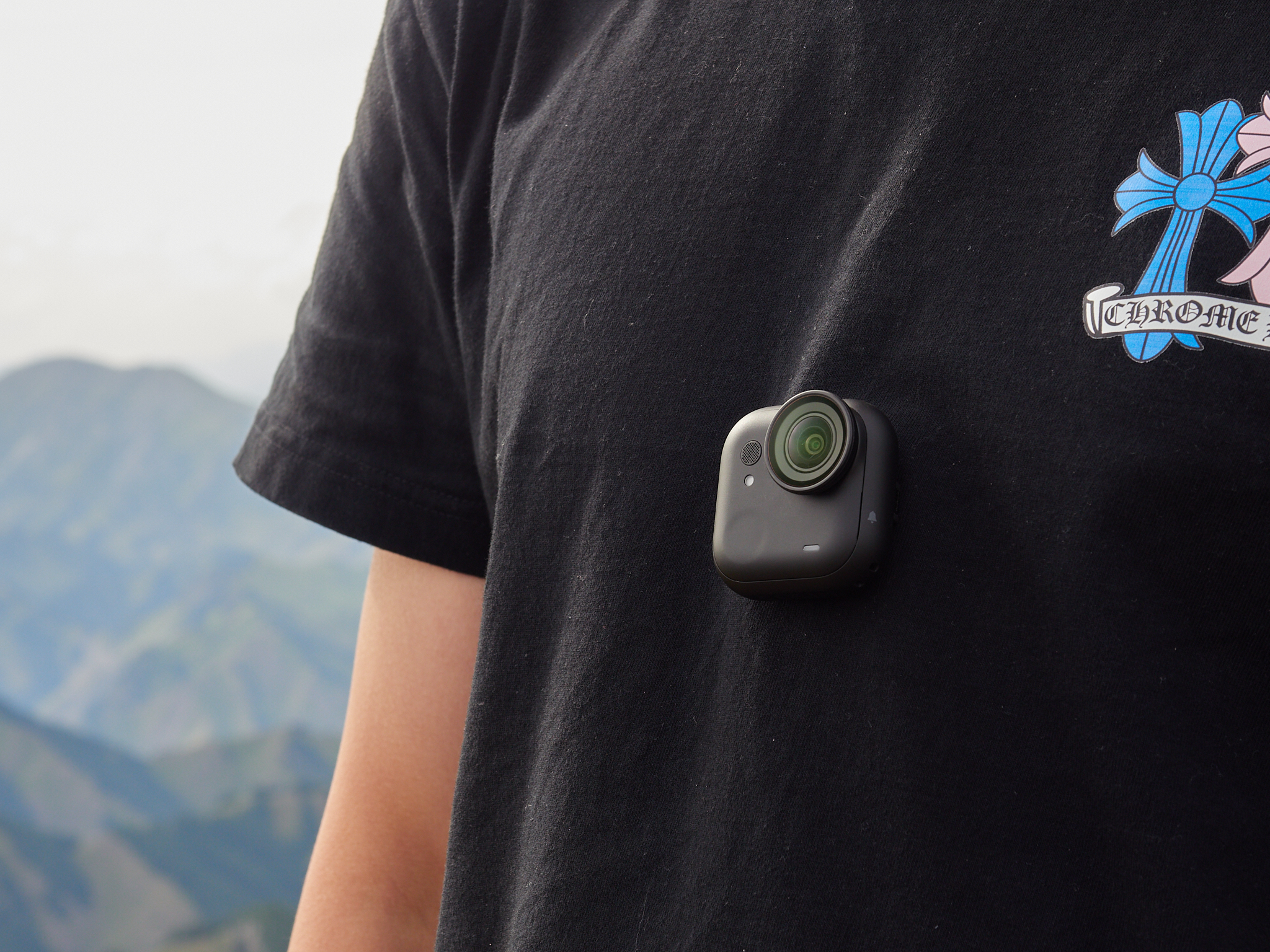
(Image source: Lei Technology)
In terms of overall design, the Insta360 GO Ultra is closer to the design ID of the Insta360 Ace Pro2, and it even includes a rubber anti-slip area similar to a camera grip on the right side of the expansion module, providing some grip.
There are four buttons on the expansion module: a start/stop recording button on top, a power button and a quick custom button on the right, and a button to detach the camera body on the left.
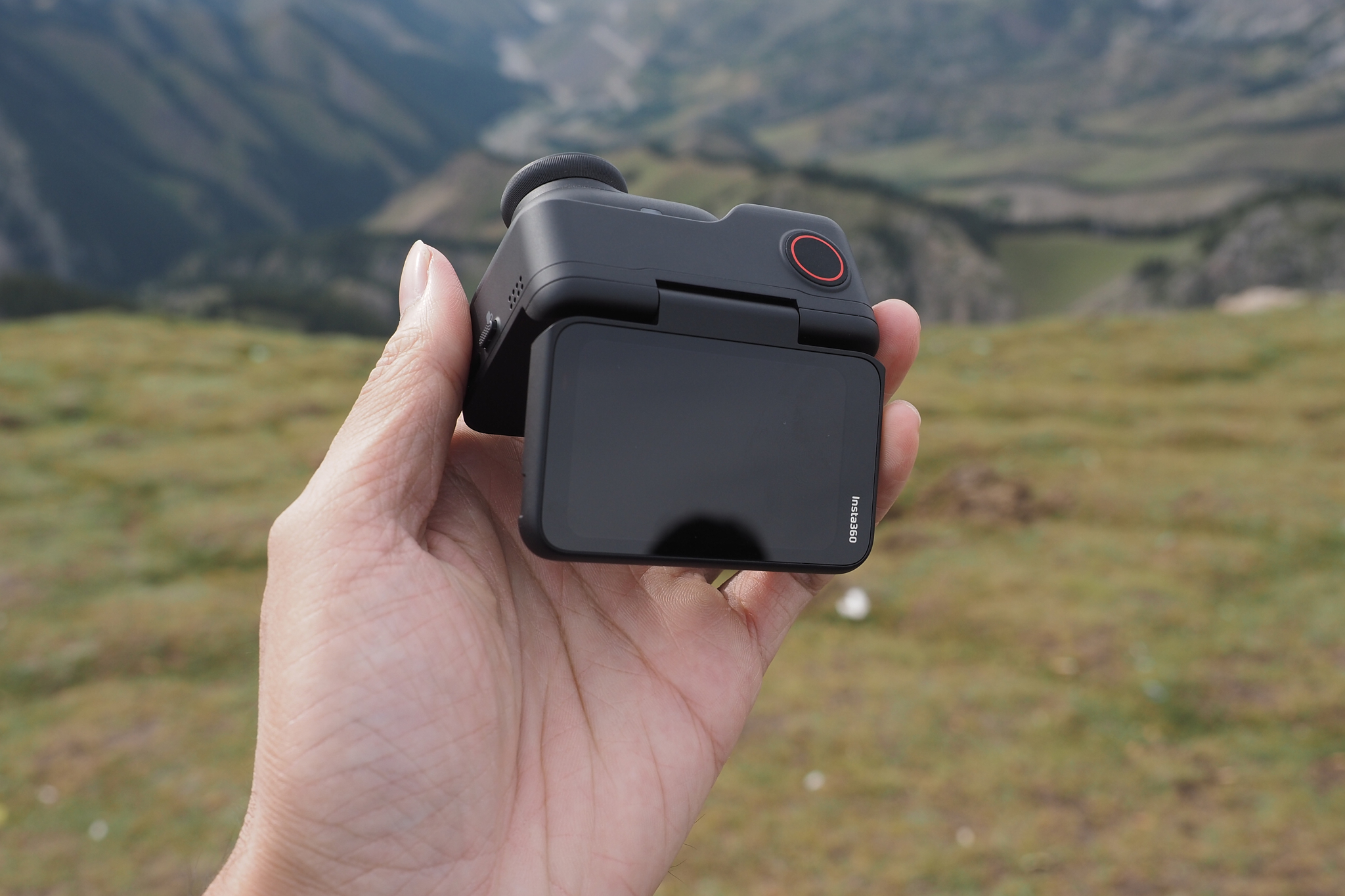
(Image source: Lei Technology)
If you've never used a pocket camera before, you might be puzzled by this strange design. Since it aims for compactness, why does it come with an expansion module comparable to a traditional action camera?
But once you actually use it, you will understand how significant the expansion module is. First and foremost, its most important function is to power the single camera of the Insta360 GO Ultra with its built-in battery, similar to how a robot vacuum cleaner needs a base station to charge.
The screen operation logic of the expansion module is basically the same as that of other Insta360 products. The main interface displays essential information such as image quality, zoom level, focal length, battery life, and remaining memory card time. Some minor functions are placed in the secondary menus at the top and right, making it easy to learn and use.
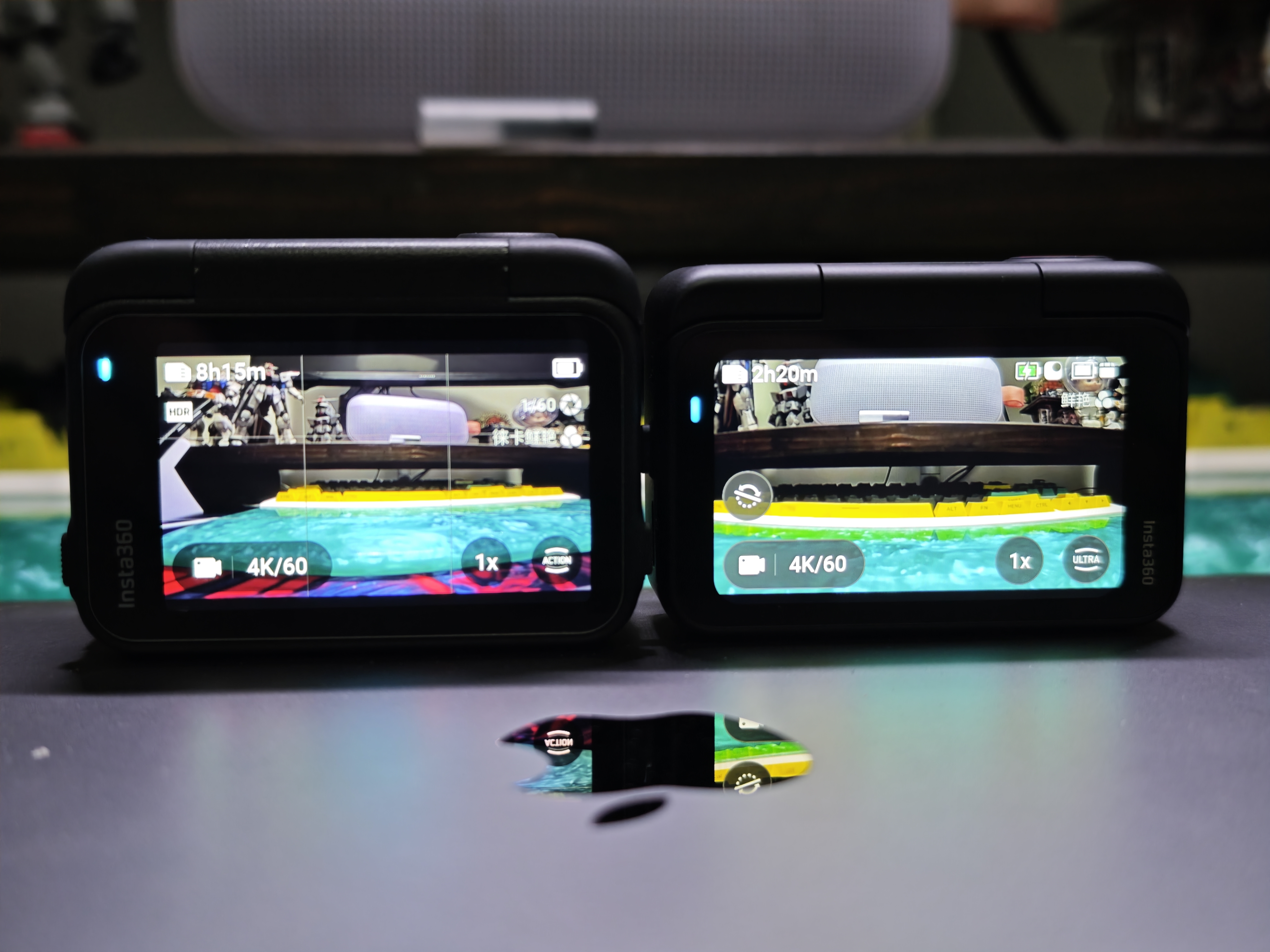
(Image source: Lei Technology)
I tested it and found that charging the completely drained camera body with the expansion module only consumed 26% of its battery, which translates to roughly three to four full charges for the camera. This performance can fully meet most usage needs.
As for the battery life of the single camera during shooting, with 4K/30fps enabled, the Insta360 GO Ultra can continuously record for about 58 minutes, and this duration extends to 170 minutes with the expansion module. If you feel that this is still not enough, you can also enable the long battery life mode in the secondary menu, which I tested to increase by nearly 10 minutes, totaling three hours.
When 4K/60fps is enabled, its battery life is 33 minutes. After all, it's a pocket camera designed for portability, so there's no need to compare it to mainstream action cameras.
The main body of the Insta360 GO Ultra has only one button (in the diagonal area of the camera), and the pressing feel is quite clear, even with full-finger gloves on while cycling. It also supports voice and gesture control after powering on, with high recognition rates for both, allowing for blind operation in relatively quiet environments.
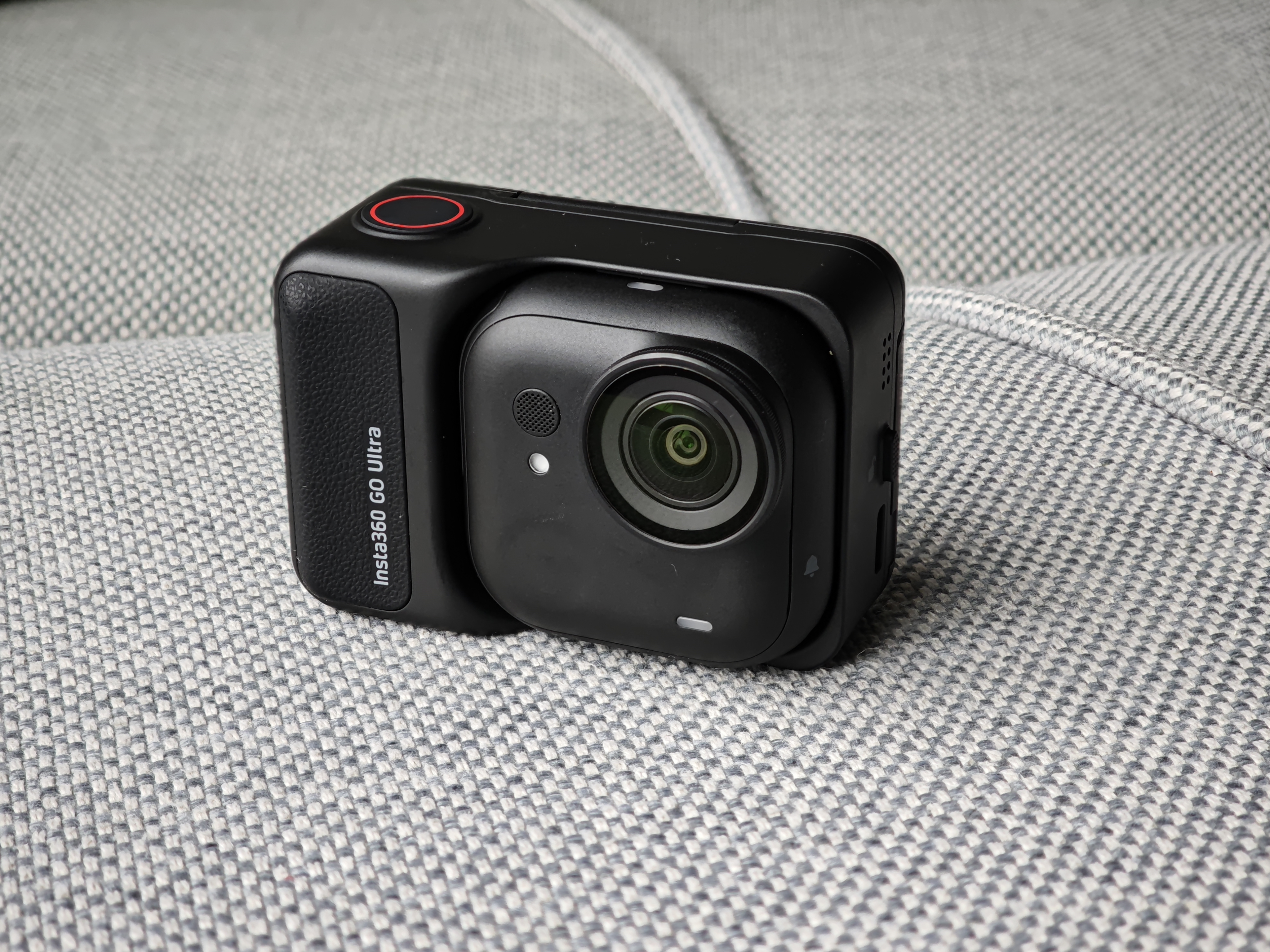
(Image source: Lei Technology)
The Insta360 GO Ultra also continues a tradition of the Insta360 Ace Pro2: it has a built-in vibration motor. The motor's presence better alerts users to the start/stop of recording. Unlike action cameras, the 'freely placeable' nature of the Insta360 GO Ultra makes it harder for users to notice whether it has correctly entered the working state.
Regarding the design of the Insta360 GO Ultra, my personal evaluation is that it 'gives up some to gain others.' The larger size does indeed compromise some portability, but it brings stronger image quality and battery life. For someone like me who loves good image quality, this sacrifice is completely acceptable.
Finally shedding the 'sunshine camera' label?
For your convenience, here I briefly list the hardware specifications of the Insta360 GO Ultra: a 1/1.28-inch large sensor (capable of outputting photos up to 50MP), a 5nm AI processor, a 2.5-inch touchable flip screen, support for image transmission remote control, and compatibility with external microphones or TWS earphones.
And here is a brief explanation of its video resolution capabilities:
4K resolution: 3840*2160@24/25/30/48/50/60fps;
2.7K resolution: 2720*1536@24/25/30/48/50/60/100/120fps;
1080P resolution: 1920*1080@24/25/30/48/50/60/100/120/200/240fps.
If you are familiar with action cameras, you might mistakenly think I've entered the specifications incorrectly. How could a small 'pocket camera' support 4K60fps video recording? After all, previous 'pocket cameras' were limited by their size and could only accommodate a small sensor, which resulted in decent image quality in good lighting conditions but mediocre performance in low light. For this reason, 'pocket cameras' were once known as 'sunshine cameras,' meaning they only took good photos in the presence of light and performed poorly without it.
Not being a 'sunshine camera' may be one of the reasons for the increased size of the Insta360 GO Ultra. If I'm not mistaken, this 1/1.28-inch sensor and 5nm AI processor should be sourced from the Insta360 Ace Pro1 generation.

(Image source: Lei Technology)
During my over one month of experience, I used the 4K60fps and night scene modes most frequently. Let's start with the former. The overall image quality is quite good, especially in daylight, with a natural and pleasing HDR effect throughout the frame.
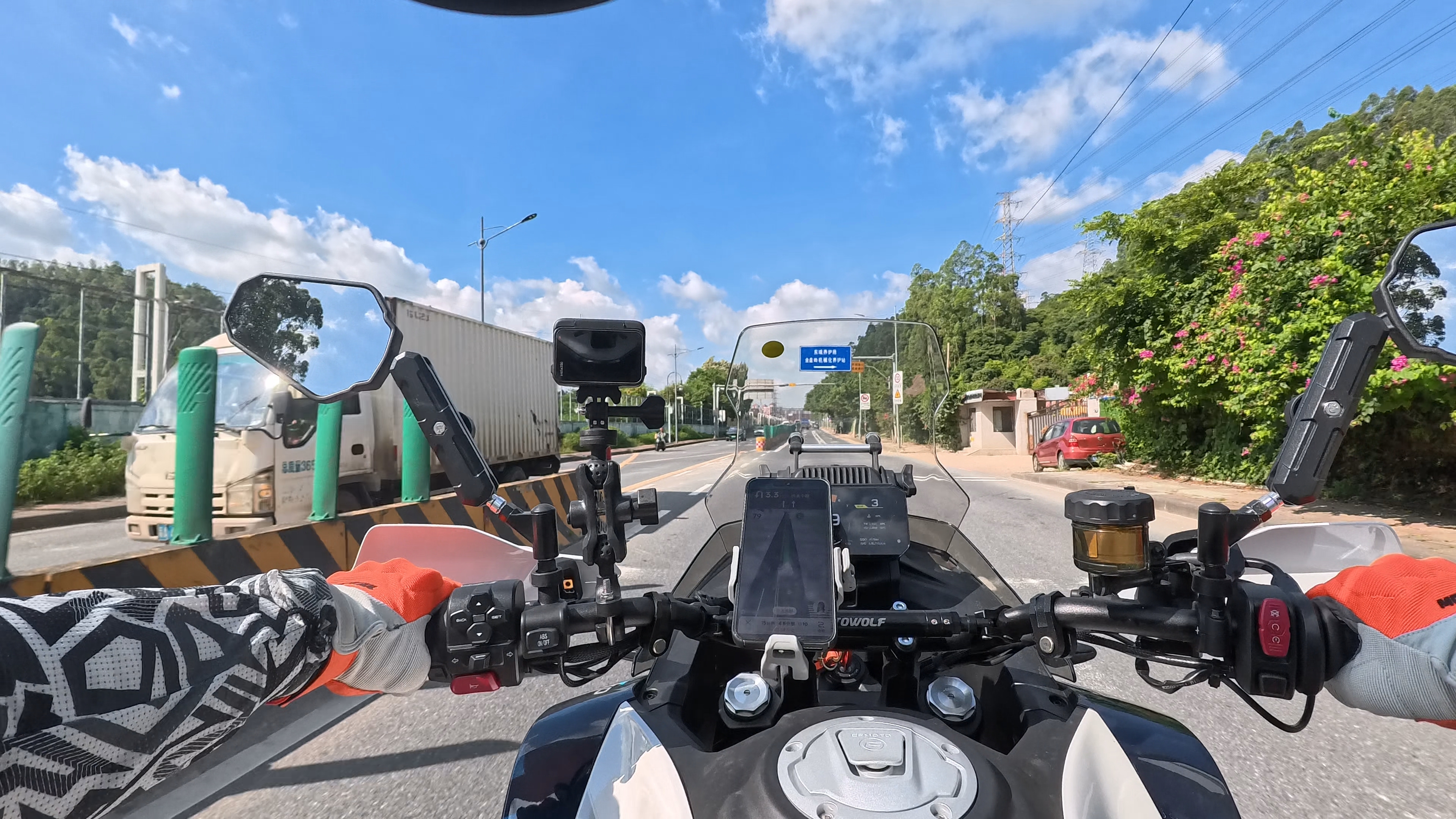
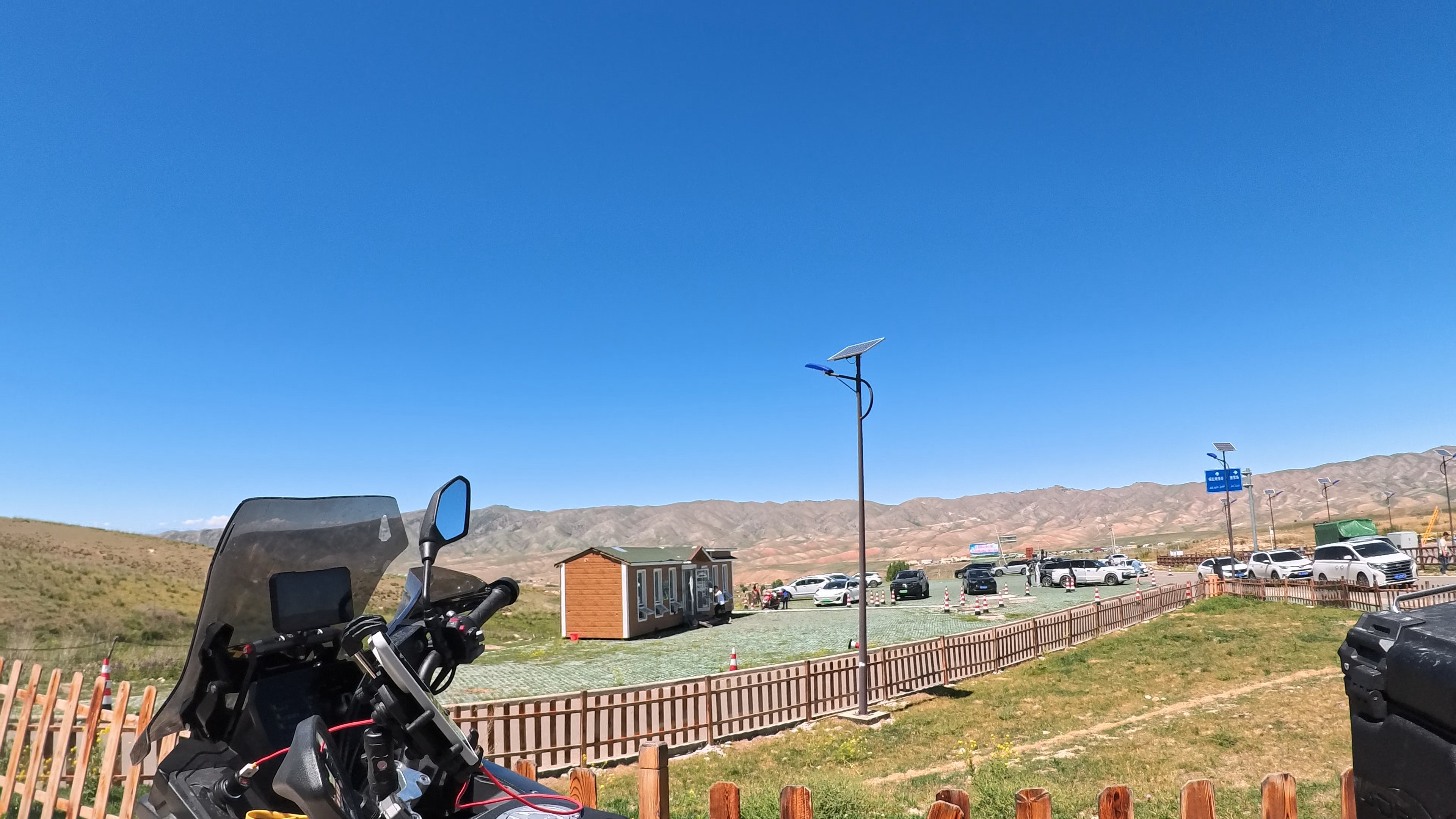
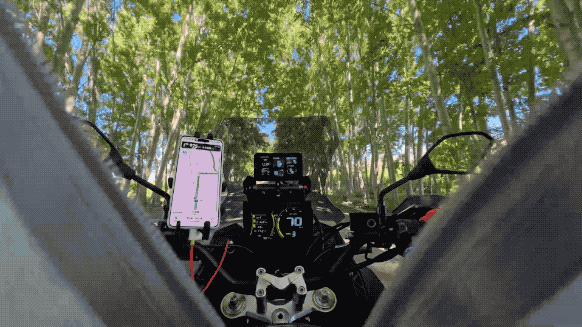
(Image source: Lei Technology)
In low-light conditions at night, the Insta360 GO Ultra's performance exceeded expectations. As seen in the video screenshots, even with only distant street lights and sporadic lighting from residential buildings, the image remains very pure, without blurred dark details, color banding, or full-screen noise.

(Image source: Lei Technology)
From the GIF, it can be seen that the Insta360 GO Ultra transitions smoothly from dark to well-lit scenes, without the high flicker, stutter, or white balance inaccuracies I expected. The details of the tunnel walls are also perfectly preserved.
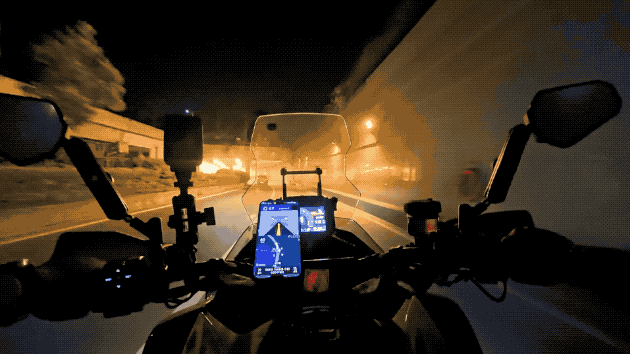
(Image source: Lei Technology)
To further test the extent of the Insta360 GO Ultra's night scene algorithm, I deliberately chose an environment with almost no light sources other than car headlights. As seen in the image, in such situations, the Insta360 GO Ultra does not forcibly increase the brightness of the image but instead chooses to ensure the white balance and color stability of the visible area as much as possible. This 'doing its own job well' approach surprised me.

(Image source: Lei Technology)
Incidentally, although the Insta360 GO Ultra does not have built-in Leica filters, I personally feel that its color grading style is biased towards Leica's vivid filter, which is a matter of personal preference.
Of course, if you are not satisfied with the default color settings, it comes with seven filters of different styles, basically covering most shooting themes. The natural and vivid modes are more suitable for daily shooting styles.
If you want to further adjust the color performance of the image, Insta360 thoughtfully reserves a manual mode for you, which may be a hint that Insta360 GO Ultra will introduce various ND polarizing filters.
Although positioned as a pocket camera, the Insta360 GO Ultra also has three built-in image stabilization standards. From my personal experience, it is best to enable the high image stabilization mode for daily use: the mode without image stabilization is suitable for shooting fixed shots; the low and standard modes do not have significant image stabilization intervention, and even slightly larger steps while walking can cause noticeable shaking; with the high image stabilization mode enabled, it can effectively filter out shaking whether during daily walking, cycling, or high-intensity sports. However, the trade-off is that a portion of the image will be cropped, which is unavoidable.
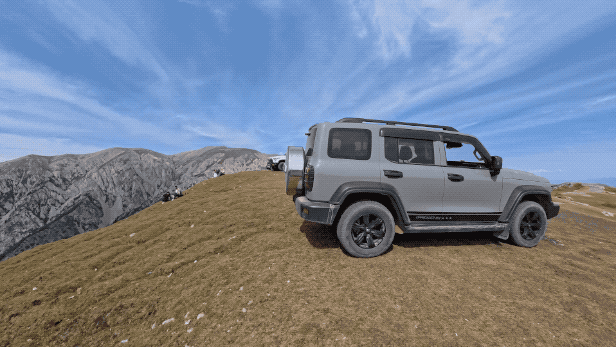
(Image source: Lei Technology - Low image stabilization mode)

(Image source: Lei Technology - Standard image stabilization mode)
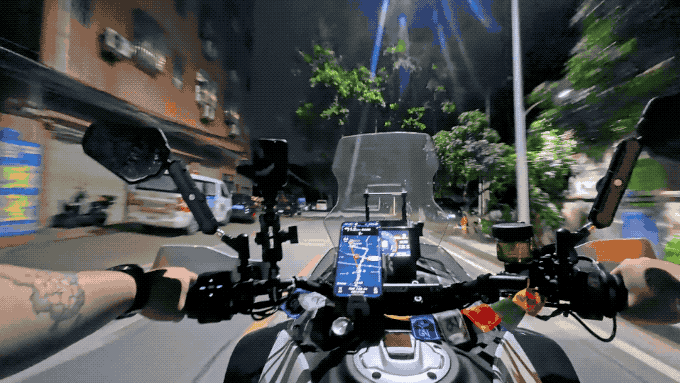
(Image source: Lei Technology - High image stabilization mode)
In terms of image quality, the Insta360 GO Ultra has caught up with mainstream action cameras. Previously, many users were reluctant to buy thumb cameras due to factors such as image quality. However, the emergence of the Insta360 GO Ultra has completely changed their ingrained impression of thumb cameras. Who says you can't take good photos/videos with a thumb camera?
What advantages does it have compared to mainstream action cameras?
At this point, many readers may wonder, since the operation and image quality are similar to those of mainstream action cameras, why not just choose an action camera?
In reality, there is a world of difference in usage between the two, or rather, the unique form factor of pocket cameras allows them to do things that action cameras cannot.
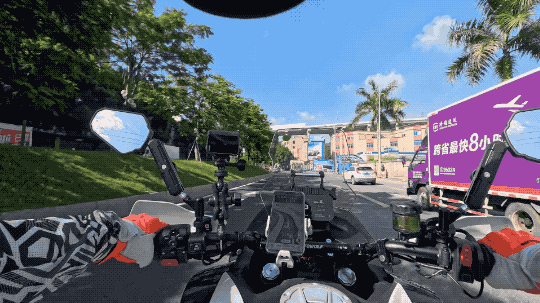
(Image source: Shot by Leitech)
For example, we can leverage the mechanism of separating the expansion module from the single camera and wireless video transmission to achieve wireless real-time preview and video playback.
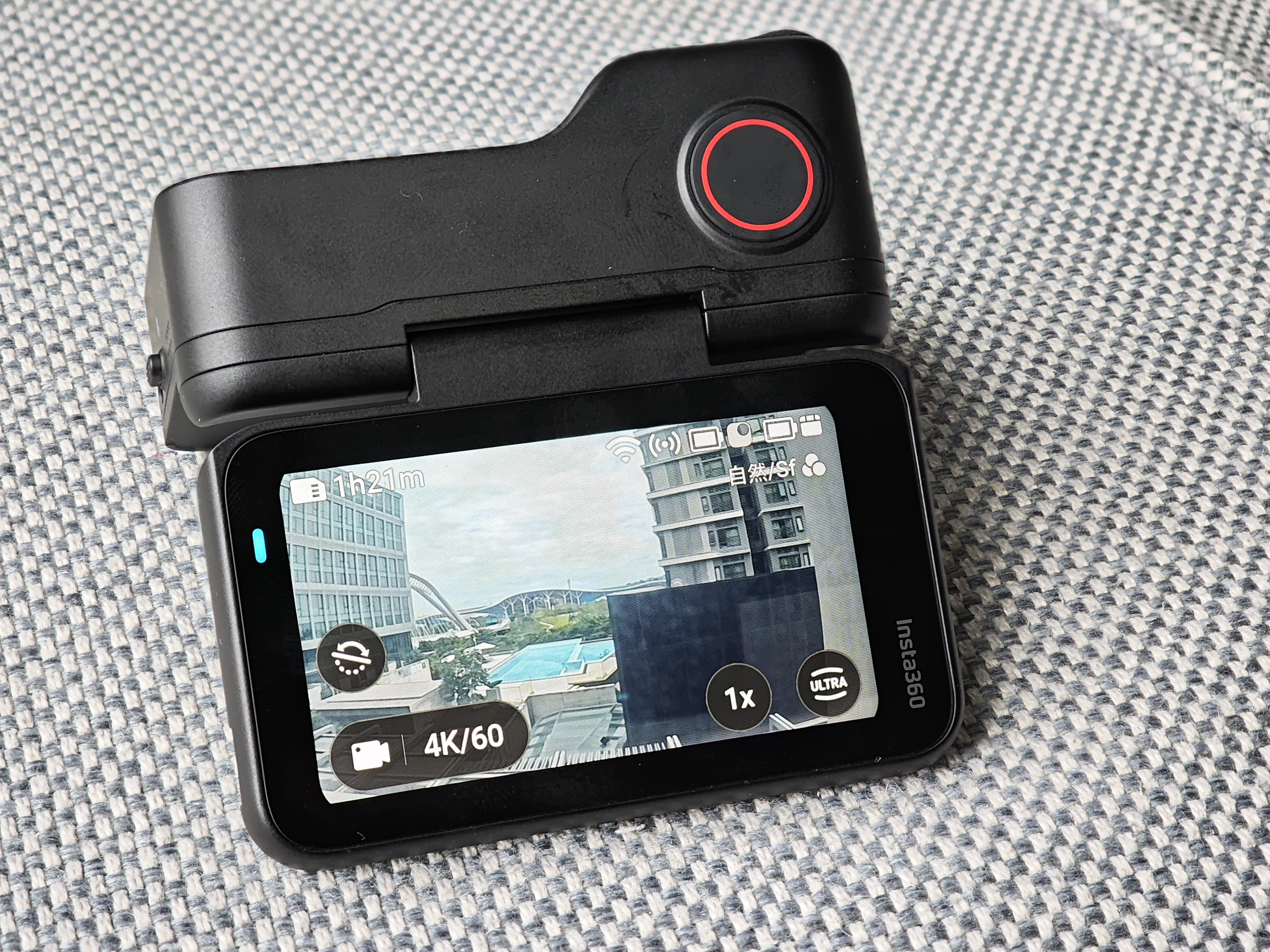
(Image source: Shot by Leitech)
To give an example, when I am cycling with the Insta360 GO Ultra, I can use the expansion module to view the footage being recorded without pausing the recording, which is much more convenient than action cameras.
More importantly, this design allows me to preview the footage before shooting. If I find that the composition or exposure settings are not right, I can adjust them in time, rather than discovering after filming that I have just captured a useless clip.
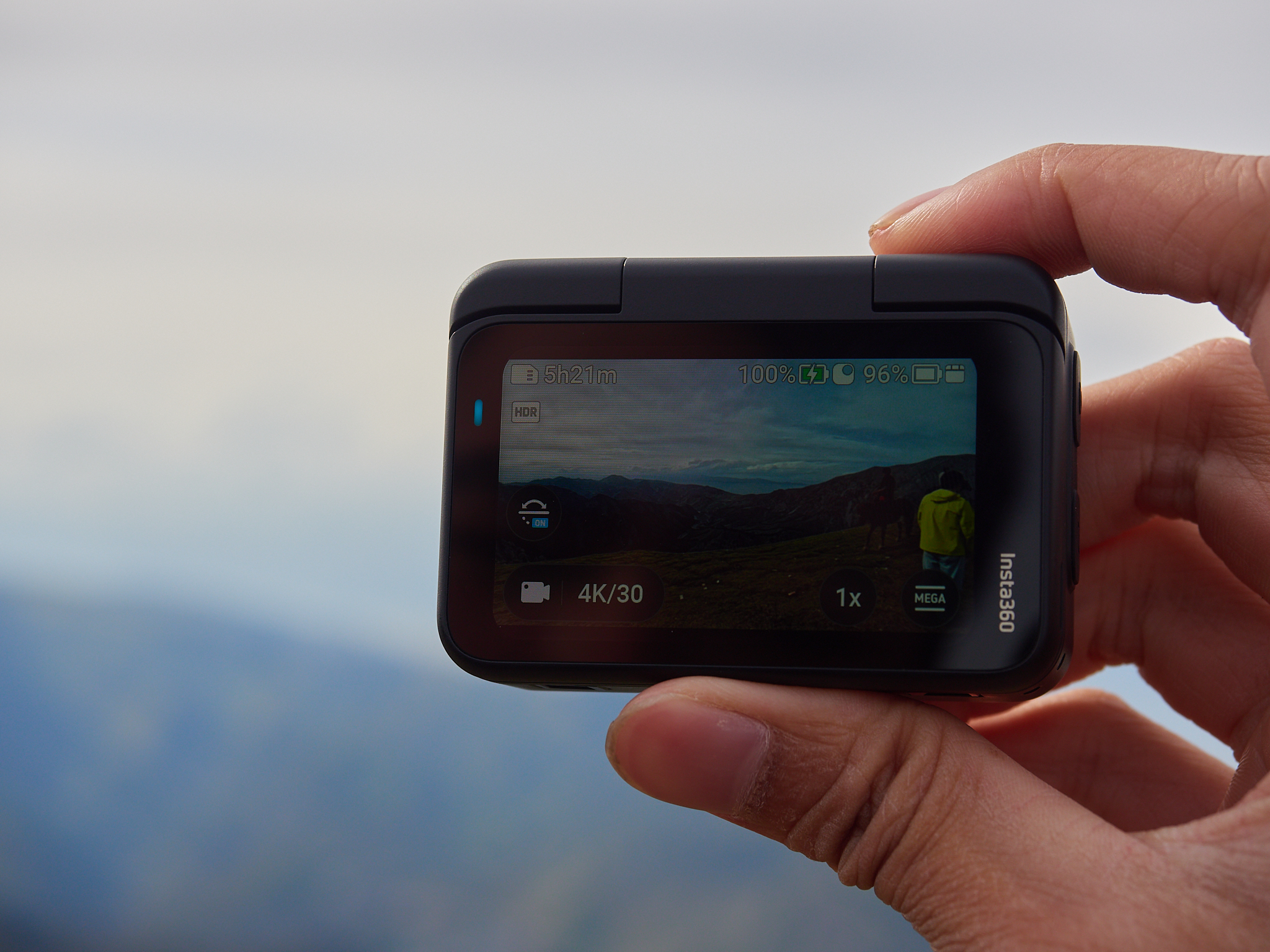
(Image source: Shot by Leitech)
Furthermore, with the official magnetic accessories or relying on its strong magnetism, you can come up with numerous "strange" shooting angles, such as clipping it onto a hat brim, attaching it to your chest, "hanging" it on a messenger bag using magnetic components, or even utilizing its lightweight and magnetic convenience to turn various iron objects like your car, roadside guardrails, lampposts, etc., into temporary mounts to provide camera positions. This is the biggest and most irreplaceable advantage of thumb cameras.
The visual impact of footage captured from different angles is, in my opinion, far greater than image quality.

(Image source: Shot by Leitech)
Therefore, Insta360 GO Ultra is not positioned as the main camera for daily VLOG shooting. Its shooting method is not meant for continuous recording. In my view, it is designed to be pressed lightly when you need to shoot and put away to charge when not in use.
Due to its extremely compact body and low profile, it is ideal for capturing first-person perspective shots and special shots. However, if used as the main camera for VLOG shooting, its image quality and battery life may not fully meet the requirements.
Of course, if you wish, the official also provides a magnetic adapter for the expansion module, allowing you to use it as an action camera mounted wherever you want. This method is more suitable for shooting time-lapse videos.
Oh, right, Insta360 GO Ultra has a particularly interesting small feature. In the past, when I wanted to edit footage after shooting, I could only obtain it through the APP or data cable connection. But Insta360 GO Ultra has a built-in cross-device transfer function.

(Image source: Diagram by Leitech)
Yes, its principle is exactly the same as Android's cross-device transfer. For example, I use a Xiaomi phone. In this case, I only need to select the desired footage from the Insta360 GO Ultra's album in advance and choose "Send to Phone", saving a series of cumbersome steps.
Summary: A small action camera with a clear positioning
As per usual, we will use Leitech's review template to summarize the experience with Insta360 GO Ultra:
Advantages:
1. Significant improvement in image quality, able to compete with mainstream action cameras;
2. Good battery life, generally able to complete shooting before running out of power;
3. The screen quality of the expansion module is good, with no color cast issues;
4. Simple button layout, easy to use even for children.
Disadvantages:
1. The included neck strap with a magnetic module can be a bit warm during long-term wear in summer;
2. As a new product category, there are currently fewer accessory options.
In terms of pricing, the starting price for the Insta360 GO Ultra is 2598 yuan, the Popular Bundle (including Mini Tripod Selfie Stick 2.0, Magnetic Quick Release Mount, and Swivel Mount) is 2718 yuan, the Family Bundle (including Mini Tripod Selfie Stick 2.0, Baby View Hat Clip, and Magnetic Quick Release Mount) is 2718 yuan, and the Road Bundle (including Elastic Strap Mount, Sports Adapter Frame, Magnetic Quick Release Mount, and Screen Protector) is 2718 yuan. These are very reasonable prices.
Having written this far, I believe everyone can understand its advantages and disadvantages. Nevertheless, I still really like this little camera because its form factor is truly unique.
As camera designs from various brands gradually converge, Insta360 has made this increasingly mundane market much more interesting. If Insta360 GO Ultra can continue to be upgraded in the future, with improvements in image quality, night scenes, frame rate, battery life, etc., I believe it will have a significant market share. After all, such fun little cameras are rare in the market.
Source: Leitech
Images in this article are from: 123RF Licensed Stock Library Source: Leitech








